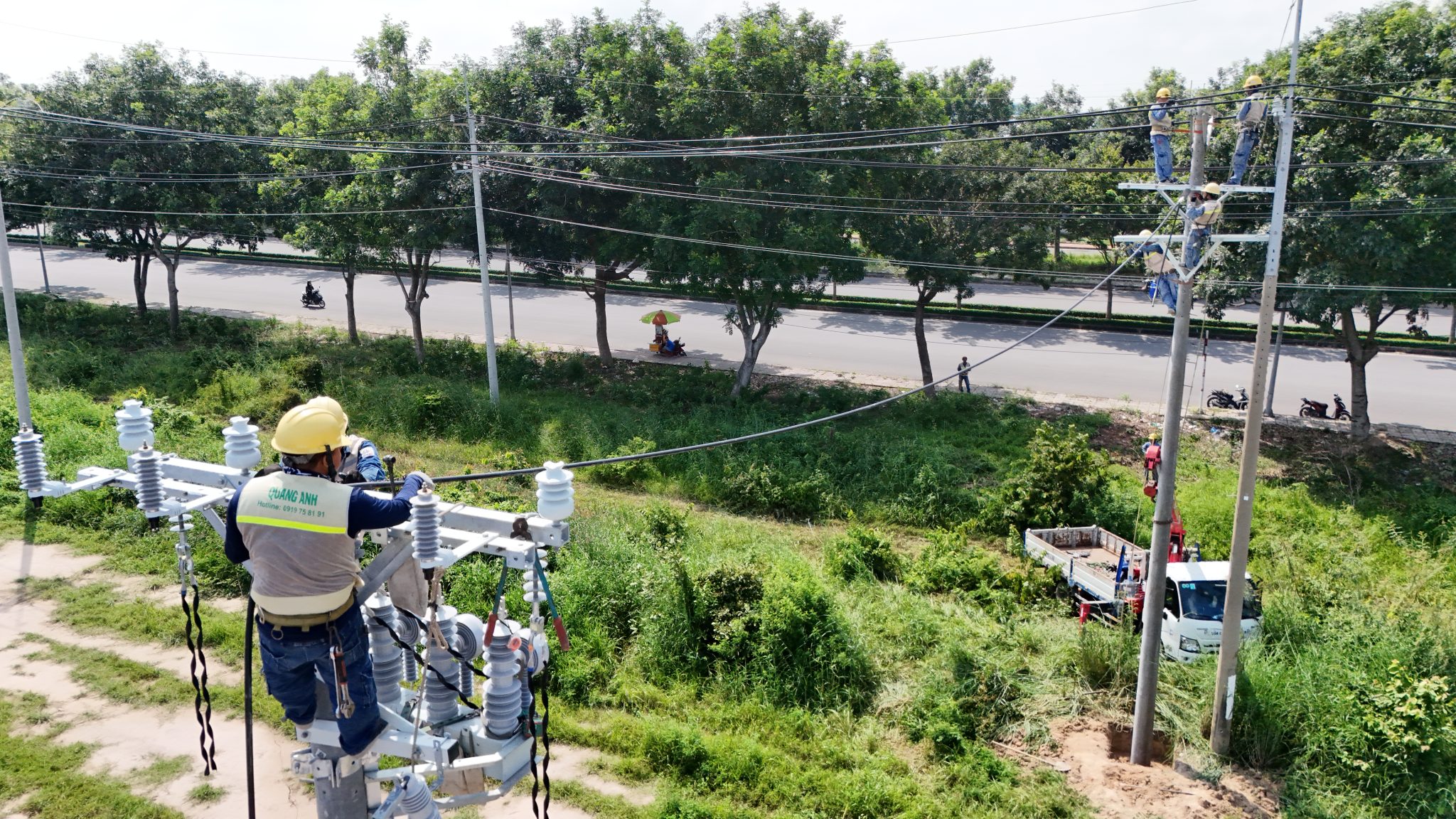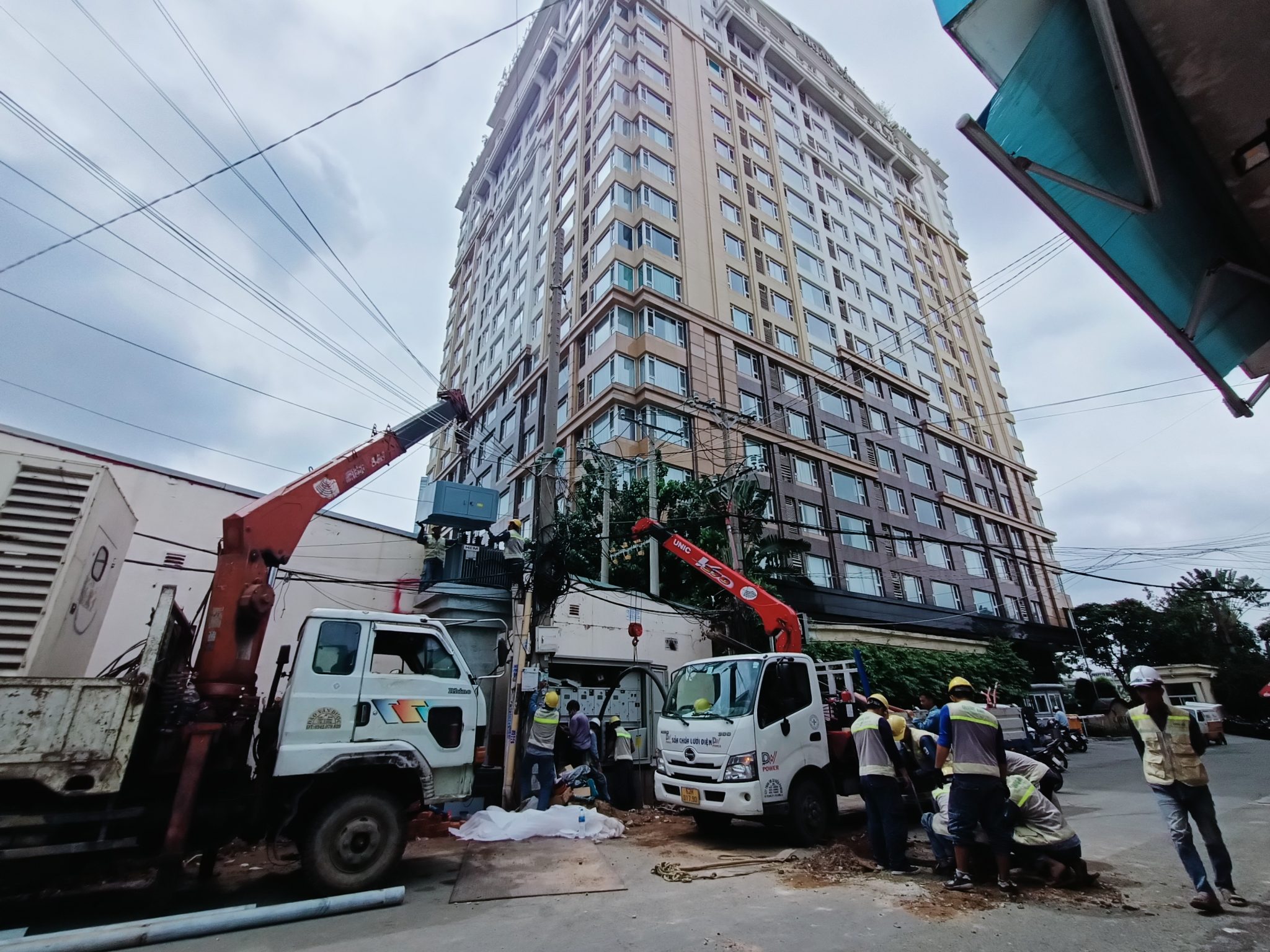News
Solar Power Costs in Vietnam 2025: Pricing Framework and Policy Trends
The solar power costs in Vietnam in 2025 are clearly defined according to the Ministry of Industry and Trade’s policy decisions. Factors such as regional power pricing and types of power plants, along with policy shifts from FIT mechanisms to competitive bidding, play a crucial role in shaping these costs in the context of an increasingly evolving energy market.
Solar Power Pricing Framework 2025
According to Decree 988/QD-BCT by the Ministry of Industry and Trade, the solar power pricing framework for 2025 is divided by power plant type and geographic region. These prices do not include VAT and aim to reflect the main differences in solar radiation potential and operational costs in each region. Higher prices encourage the development of solar power with storage systems to balance power supply and optimize resource use efficiently.
Decree 988/QD-BCT issued by the Ministry of Industry and Trade on April 16, 2025, established a new pricing framework for solar power generation in Vietnam. Changes in this pricing framework apply to both ground-mounted and floating solar power, with and without battery storage systems.
To understand this better, we need to delve into each aspect of solar power pricing.
-
Ground-Mounted Solar without Storage:
-
North: 1,382.7 VND/kWh
-
Central: 1,107.1 VND/kWh
-
South: 1,012.0 VND/kWh
-
Floating Solar without Storage:
-
North: 1,685.8 VND/kWh
-
Central: 1,336.1 VND/kWh
-
South: 1,228.2 VND/kWh
The application of different prices between regions reflects differences in renewable energy potential and operating costs. This is particularly clear in the case of floating solar, where the highest price is in the North due to greater challenges in geography and solar radiation potential.
Battery Storage Systems
An important aspect of the 2025 power pricing framework is encouraging the integration of battery storage systems. This not only enhances the stability of the power source but also optimizes economic efficiency. Specific requirements for battery storage systems include:
- Capacity: At least 10% of the solar power plant’s capacity.
- Storage/Discharge Time: Ensure at least 2 hours.
- Electricity Charge Output Ratio: 5% of the plant’s total electricity production.
With this incentive, battery storage systems from well-known brands like Schneider and ABB can become an indispensable part of new solar power projects, helping to balance power sources more efficiently.
In summary, the solar power pricing framework for 2025 is not only a significant step in managing and developing sustainable renewable energy sources but also provides an incentive for investors when integrating battery storage technology to optimize profitability and stabilize power sources.

Policy Trends and Impact on Solar Power Costs 2025
The year 2025 marks an important transition as Vietnam shifts from the FIT price mechanism to competitive bidding for solar power projects. This not only creates a more transparent playing field for contractors but also helps optimize investment and operating costs. Especially, tax incentives and reduced transmission fees continue to be a driving force helping large-scale projects achieve optimum efficiency with significantly reduced investment costs.
In 2025, fundamental changes in Solar energy policy impact 2025 were witnessed, especially with the Vietnamese Government issuing important decrees. Specifically, Decree 58/2025/ND-CP recognized and strongly supported rooftop solar, allowing surplus electricity to be sold to the grid and receiving financial and land incentives.
Legal Framework and Support Policies
- Decree 56/2025/ND-CP detailing the electricity development plan is an important foundation for the development of solar power systems, improving market transparency and efficiency through **Energy market regulations**.
- Electricity Planning VIII with Decision 500/QD-TTg promotes better management of solar power investment and installation, especially focusing on improving legal issues related to investment.
Rules for Selling Surplus Electricity and Production
With the new **Solar energy regulations**, households and businesses with systems below 100 kW are allowed to sell up to 20% of surplus electricity, creating conditions for more effective electricity exploitation and business.
Pricing Framework for Solar Power with Battery Storage
According to the Ministry of Industry and Trade, the pricing for solar power with integrated battery storage in 2025 may reach up to 1,875 VND/kWh, higher than traditional solar power. This opens up new opportunities for additional investment in **Sustainable energy incentives** with the stability and flexibility of renewable energy sources.
Impact on Solar Power Costs
- Financial incentives, land cost exemptions and reductions help significantly reduce initial investment costs.
- **Renewable energy policy** allows for surplus electricity sales, increasing revenue and reducing production costs, encouraging investment in battery storage.
- Clarifying electricity development planning and transparent investment procedures helps save unnecessary costs, increasing solar power investment efficiency.
Sustainable Development Orientation
Policies encouraging including solar power in the priority category to reduce carbon emissions and aim for Net Zero. This aligns with global trends and positions Vietnam on the global clean energy map.

Investment Costs for Solar Power Installation
The investment cost for solar power installation remains stable, estimated at about 13-15 million VND for a 100 kWp capacity system. These costs may vary depending on the type of battery, storage system features, and regional technical requirements. Pricing policies and tax incentives help reduce financial pressure, encouraging many investors to install rooftop solar systems, bringing economic and environmental benefits.
The cost of solar power is an important factor when considering investment in renewable energy systems. Rooftop solar systems are gradually becoming an optimal choice for households and businesses in Vietnam. Below is a breakdown of investment costs by popular capacity levels.
- **Cost by Rooftop Solar System Capacity** – **3 kWp**: Price around 35 – 58 million VND, paired with a number of solar panels from 7 to 9, generating about 360 kWh of electricity per month. – **5 kWp**: Price in the range of 50 – 85 million VND with 12 solar panels, producing 600 kWh of electricity monthly. – **10 kWp**: Price from 95 – 150 million VND with 23 solar panels, generating about 1,200 kWh. – **15 kWp**: Cost around 135 – 145 million VND with 34 panels, capacity of 1,800 kWh monthly. – **20 kWp**: Price ranging from 160 – 240 million VND, suitable for large farms or businesses. The selling price includes equipment, construction, and frame mounting, excluding VAT and periodic maintenance fees.
- **Cost Per kWp** – The average solar power cost is 10-20 million VND/kWp, depending on the system type (grid-connected or storage) and equipment quality.
- **System Cost Components** A solar power system typically includes:
- Solar panels: Largest cost, with mono, poly, and multi-crystalline types.
- Inverter: Converts DC to AC electricity.
- Frame Mounting: Secures panels on roofs or ground.
- Electrical Cabinet and Wiring: Protection and connection systems.
- Construction, transportation, installation costs.
- **Maintenance and Operation Costs** – Solar systems have low maintenance costs, estimated at about 1 million VND per year for cleaning and periodic inspection.
- **Factors Affecting Costs** Factors causing solar power cost fluctuations include:
- Quality and brand of components: Brands like Mitsubishi, ABB, or Schneider may have higher costs.
- Installation location: Terrain and infrastructure affect construction costs.
- System type: Systems with storage devices are more expensive than grid-connected systems.
- System scale: Cost per kWp decreases with larger capacity due to scale advantages.
- **Efficiency and Energy Output** – A system with 1 kWp can produce 4-5 kWh of electricity/day, enough to meet the basic needs of a small family.
The investment cost for solar power systems ranges from 35 million to 240 million VND for systems from 3 kWp to 20 kWp, depending on factors such as capacity, equipment quality, and system type. This is an optimal solution for efficiently utilizing renewable energy in Vietnam.

New 2025 solar power cost regulations provide clear pricing frameworks and encourage storage technology development, while tax incentive policies help optimize investment. Changes in policy approaches promise to improve project efficiency, creating sustainable profits for businesses and consumers.
Contact QuangAnhcons for detailed consultation on solar power investment via hotline: +84 9 1975 8191.
QuangAnhcons specializes in providing installation, consulting, and deployment services for solar power projects according to the latest regulations, helping customers maximize government incentives.

 Tiếng Việt
Tiếng Việt 简体中文
简体中文 Deutsch
Deutsch 日本語
日本語 한국어
한국어 ไทย
ไทย Русский
Русский Français
Français
